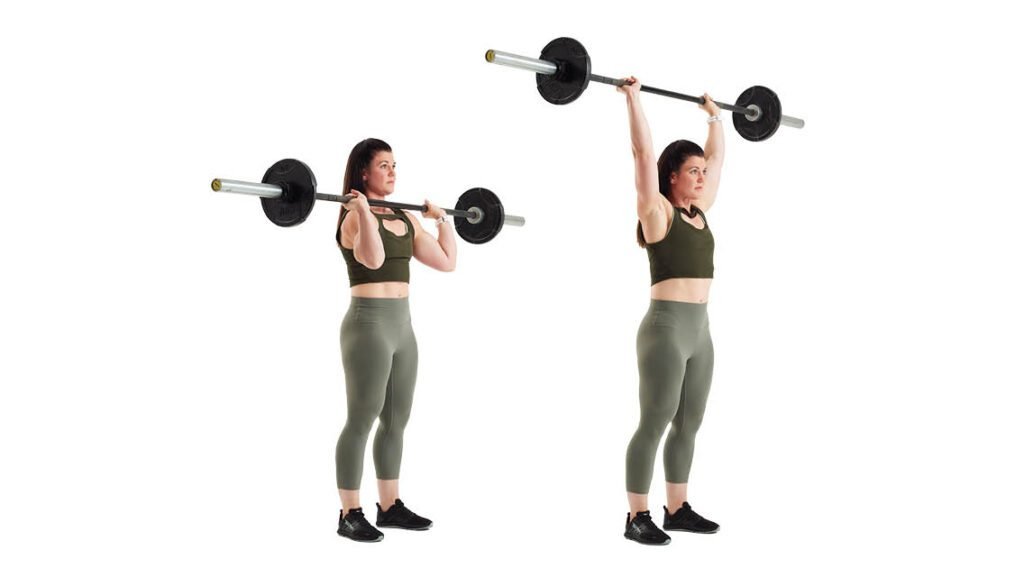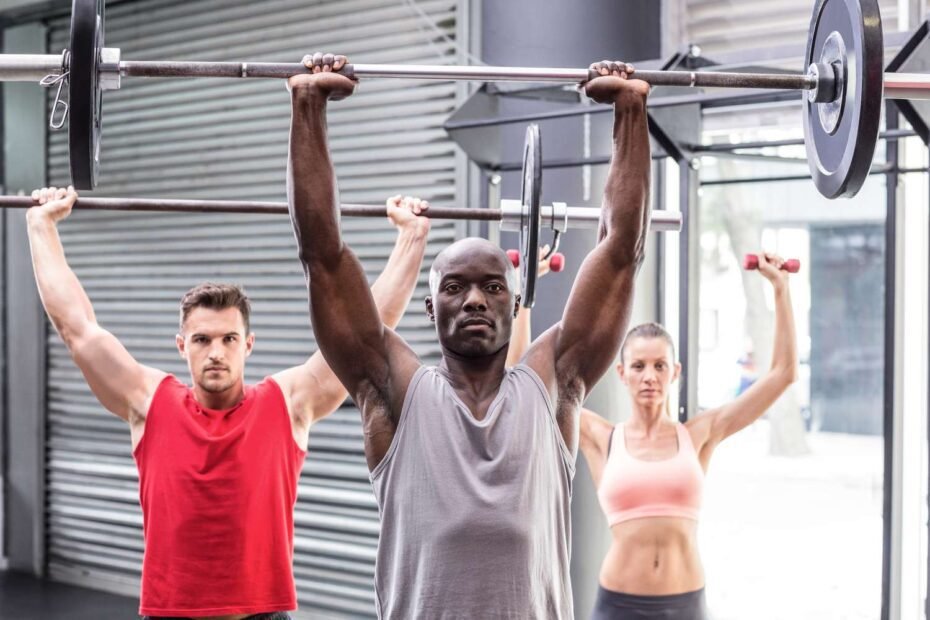The barbell shoulder press is a classic compound exercise that targets the entire shoulder complex while also engaging other upper body muscles. In this comprehensive guide, we’ll delve into the muscles involved, proper technique, benefits, safety considerations, alternative exercises, and variations to elevate your upper body training routine.
Muscles Worked:
The barbell shoulder press primarily targets the following muscles:
- Primary Muscle: Deltoids (Anterior, Lateral)
- Secondary Muscles: Triceps, Upper Pectorals, Trapezius
How to Do Barbell Shoulder Press:
Follow these step-by-step instructions to perform the barbell shoulder press accurately:

- Setup: Stand with your feet shoulder-width apart. Grasp the barbell slightly wider than shoulder-width with an overhand grip. Rest the barbell on your upper chest, just below your collarbone.
- Pressing: Exhale as you press the barbell overhead. Extend your arms fully without locking out your elbows.
- Lowering: Inhale as you lower the barbell back to the starting position with controlled movement.
- Repeat: Perform the desired number of repetitions while maintaining proper form and control.
Benefits:
Discover the benefits that the barbell shoulder press offers for upper body strength and development:
- Deltoid Emphasis: The exercise effectively targets the deltoid muscles, contributing to well-rounded shoulder development.
- Upper Body Strength: The pressing motion engages the triceps and upper pectoral muscles, promoting overall upper body strength.
- Functional Movement: The movement mimics pushing motions commonly encountered in daily activities.
Safety Tips:
Ensure your safety during the barbell shoulder press with these tips:
- Choose an appropriate weight that allows you to maintain proper form throughout the movement.
- Keep your core engaged and maintain a neutral spine.
- Avoid arching your back excessively; instead, maintain a slight natural curve in your lower back.
- If you experience discomfort or pain, discontinue the exercise and consult a fitness professional or healthcare provider.
Alternative Exercises:
Expand your upper body training with these alternative exercises:
- Dumbbell Shoulder Press: Use dumbbells to isolate each arm and engage stabilizing muscles more.
- Seated Barbell Shoulder Press: Perform the exercise while seated to eliminate lower body involvement and enhance stability.
Variations:
Add variety to your workout routine with these versatile variations:
- Arnold Press: Incorporate rotation into the movement to target the deltoids in a unique way.
- Landmine Press: Utilize a landmine attachment to vary the pressing motion and engage different muscle fibers.
Incorporating the barbell shoulder press and its variations can contribute to improved shoulder strength, well-developed deltoids, and enhanced upper body functionality. Prioritize proper form, gradual weight progression, and individualized training to align with your fitness level and goals. If you have pre-existing shoulder concerns, consult fitness professionals or healthcare providers before including these exercises in your routine.
